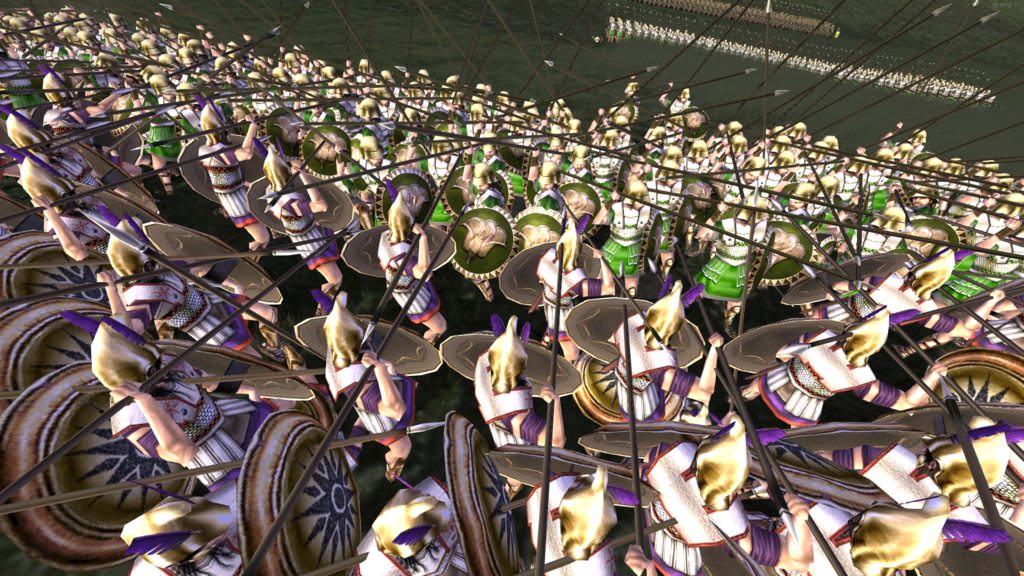Phalanx
Phalangites
The conquests of Alexander the Great brought the Greeks to the far ends of the then known world, giving them the dominant position over a vast empire stretching from the the dalmatian coast to the Indus river. The famed Macedonian phalanx, a military formation devised by Phillip, played a decisive role in those conquests.
In order to gain the advantage over enemy formations, the phalanx was due to a number of changes.
Therefore, the phalangites were armed with longer spears (4.5 to 5.5 meters). Owing to the great weight of the sarissa (7 to 9 kilos, with the spearhead and counter-weight included), one-handed wielding was impossible. To relieve the sarissoforos from the shield on the other hand, the unsuitable -due to its weight- hoplon shield was replaced with a lighter and smaller shield, also round, with a diameter of up to 65 centimeters.
For this reason, but mainly due to the need of more phalanx recruits (few could afford a strong armor), the armors were drastically limited in the Macedonian army. Only a small number of phalangites in the first rows were equipped with a thorax, usually a linothorax, a leather thorax with some metallic components, or -even more scarcely- a metal thorax, should the phalangite had been able to afford it or lucky enough to loot it.
The phalangites wore helmets mainly of Thracian style during the reign of Philip and of Boeotian origin during that of Alexander (although in both reigns, a great variety of helmets were in use), while those in the first rows and those who could afford them, were also equipped with greaves. A dagger was used a secondary weapon, which was not longer than its spartan counterpart.




Very nice post sir you are my inspiration my blog History Enlightenment also provide knowledge about history
ReplyDelete